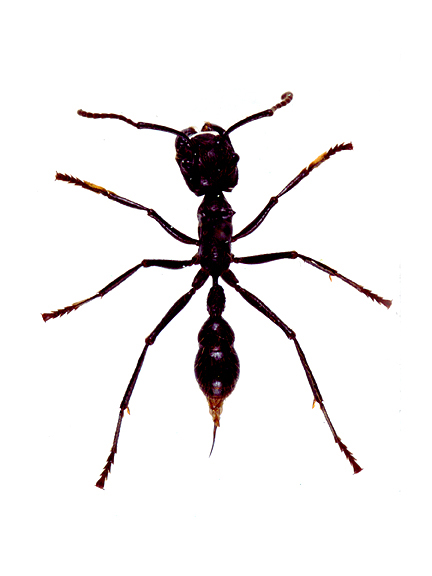Bullet Ant (Paraponera clavata)
Pricing: Dead (spread, as pictured): $40
Geographic Range: Nicaragua to Amazonia
View: Top View
Size: Length: (worker) 18-25 mm
The bullet ant gets its name from its painful sting, which is intense and lingering, like a gunshot wound. The name comes from the translation of the Spanish “hormiga bala” (ant bullet). Regionally the ant is known by many other names, all alluding to the exquisite pain that the insect causes (said by some to be the worst pain caused by an insect sting). The venom is neurotoxic, blocking central nervous system transmission in arthropods and producing extreme pain in mammals. Bullet ants are not aggressive except when defending themselves or their colony. These large ants belong to the primitive, ant subfamily Ponerinae. The genus Paraponera is unique and contains only one living species: Paraponera clavata. Bullet ants nest in underground colonies containing many tunnels and chambers. Rooms at the ends of tunnels are used as brood chambers. A single queen controls the colony, which may number only a few thousand at most. Nests are found at the bases of trees and sometimes up in the tree itself. Bullet ant workers are solitary hunters, returning to the nest with captured insects. They forage mainly in the canopy and understory, active from dusk ‘til dawn. Paraponera clavata is fond of “honeydew” and collects this sweet liquid from several ant plants (they also gather water). All food and drink is carried back to the colony and shared with other ants inside the nest. Prey items are cut up and fed to the larvae and liquids are given to them as small droplets. Plants are chewed to bits and used to make pupal chambers for the larvae when they are ready to spin cocoons.
